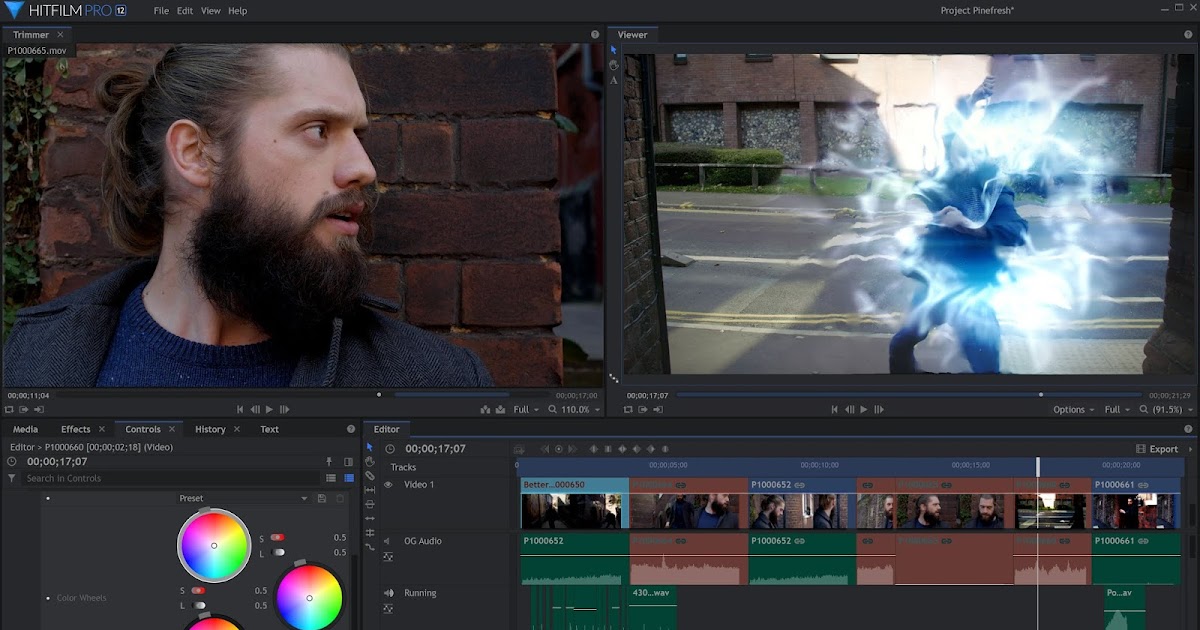

- How to make hitfilm pro run faster movie#
- How to make hitfilm pro run faster software#
- How to make hitfilm pro run faster professional#
In the back of the class is a student who is going to be our sacrificial lamb. The protagonist is a hard-nosed schoolteacher who enjoys sucking the joy out of being a kid. In this example, there will be a villain in your story, and in the first act you want to set up this character to clearly be the antagonist – and preferably, a very mean one. Let’s see if we can get the audience on the edge of their seats. Timing is everything, and slow motion can be used to build anticipation for an event that is unfolding before the viewer. Slow motion can be very powerful and subtly hidden to the viewer when the timing is just right.
How to make hitfilm pro run faster movie#
Like all special effects in video, you have to delicately use these tools to tell your story without drawing attention to the movie magic itself. After all, this is filmmaking, and scripting is just as important as the technical side of video editing. The best use of this technique is to plan ahead.

And, for narrative stories, the 24fps acquisition and playback speed has a better-looking cadence. First of all, if you choose to shoot everything in 60fps, you’ll need to play back all your normal speed in a 60fps timeline. Well, the truth is that this is not such a great idea. You might be thinking now that you should shoot at 60fps all the time (just in case). This speed happens to make for a very smooth and dramatic slow motion.
How to make hitfilm pro run faster professional#
This is a common technique, and most professional videographers capture their footage at 60fps and play back at 24, which is 40% of the original speed. In fact, it is 80% of the original speed (24 playback frames divided by 30 captured frames). Our 30fps footage plays back more slowly in the 24fps timeline. They continue onto the next second of video playback, so that our 30fps experience is stretched across one second and six frames, for a total of 1-1/4 seconds (six remaining frames divided by 24 playback frames). What do we do with these extra frames? Throw them away? Nope. If we look at one second of frames in our timeline as 24 buckets, we’d see that footage (at 30fps) would fill up all the buckets, and we’d have six frames remaining afterwards.
How to make hitfilm pro run faster software#
But, if you were to take your 30fps footage and create a timeline in your editing software with a playback speed of 24fps, things would look a bit different. If you play back that footage on your camcorder, you see those 300 frames over the 10 seconds, which will produce sprinters racing to the finish line at a normal-looking rate of speed. At 30fps, that’s 10 seconds multiplied by 30 frames per second, which adds up to 300 total frames. Let’s say you’re at a track meet, and you capture 10 seconds of footage from a 100-meter dash. We’ll pretend that we’re shooting at 30fps, a very common frame rate. For example, you may have the option to select from 24fps (frames per second), 30fps and even 60fps. Many digital video cameras can capture at different frame rates. Let’s use a fairly typical example to explore this overcranking technique further. Making Slow Motion Video Using the Overcranking Method

In most cases, overcranking is a superior technique because it doesn’t diminish the quality. We say “nearly” because the older technique of overcranking produces more natural-looking images, because frames are not duplicated digitally. The end result was nearly the same: more frames to be played back. The editing software would quickly duplicate additional frames, depending on how slow you wanted your footage to be, and place them into the video. How amazing! Rather than acquire additional frames, you could simply tell your editing software what percent of the normal playback speed you’d like and voilà! – instant slow motion. Later, along came digital video editing, which allowed an editor to slow the playback of a clip down with a click of the button, regardless of the frame rate. (We’ll explore this technique a little further in a second.) Then, the footage would be played back at the normal playback speed, producing the illusion that events are happening at a slower speed than what is natural. This meant that the camera operator would increase the frame rate (frames per second or fps) by cranking faster to acquire more frames in the same amount of time. In the early days of filmmaking, the technique for doing slow motion effects was to overcrank the camera speed.

This illusion can be done in several ways. Slow motion is when the playback of a video clip appears to be slower than the natural speed of the events. Let’s take a look at what slow motion is and discuss some common uses for slow motion. Slo-mo use can be incredibly dramatic and add emphasis where needed in a story.


 0 kommentar(er)
0 kommentar(er)
